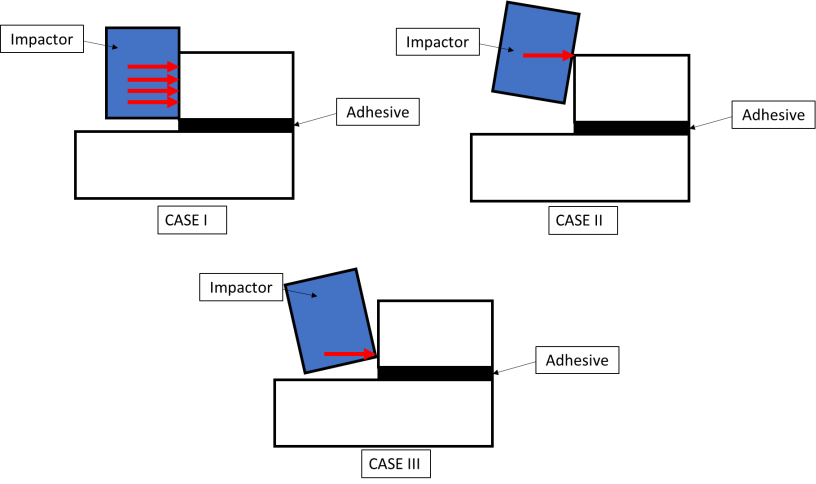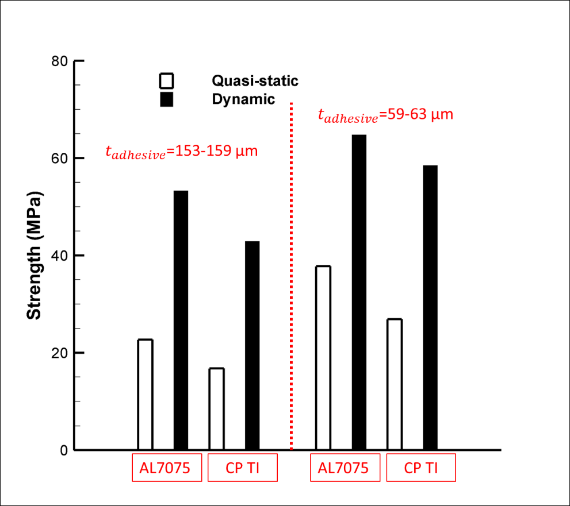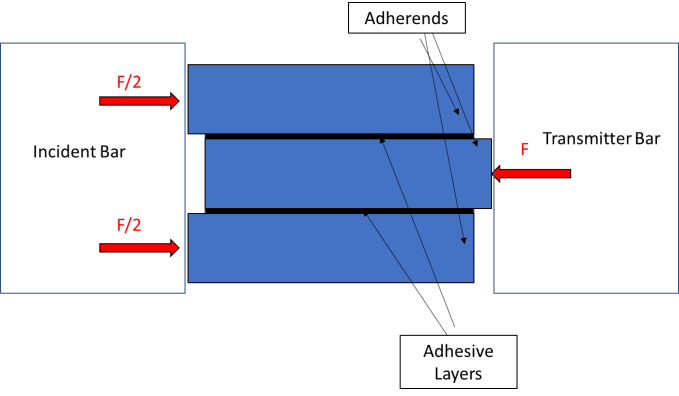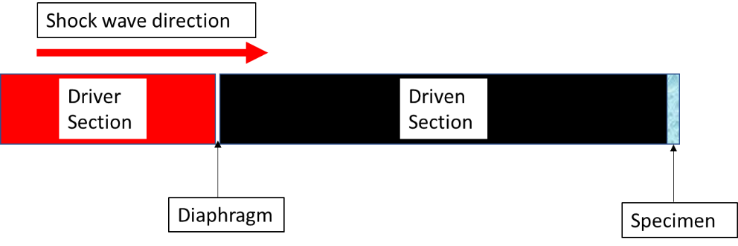-
Paper Information
- Paper Submission
-
Journal Information
- About This Journal
- Editorial Board
- Current Issue
- Archive
- Author Guidelines
- Contact Us
International Journal of Materials Engineering
p-ISSN: 2166-5389 e-ISSN: 2166-5400
2019; 9(1): 16-21
doi:10.5923/j.ijme.20190901.03

Adhesive Joints Subjected to Impact Loading: A Review
Ali Gursel1, Huseyin Murat Cekirge2
1Department of Mechanical Engineering, Duzce University, Duzce, Turkey
2Department of Mechanical Engineering, New York University, New York, USA
Correspondence to: Huseyin Murat Cekirge, Department of Mechanical Engineering, New York University, New York, USA.
| Email: |  |
Copyright © 2019 The Author(s). Published by Scientific & Academic Publishing.
This work is licensed under the Creative Commons Attribution International License (CC BY).
http://creativecommons.org/licenses/by/4.0/

Adhesive joints have widely been used in many engineering applications due to their outstanding advantages over conventional joining methods. Developing strong adhesive bonds lead adhesive joints to be a very popular joining methods in the applications subjected to impact loadings. Especially, the automotive industry uses adhesive joints in order to reduce the weight of vehicles by bonding multilayer lightweight materials. Understanding the performance of adhesive joints subjected to impact loadings is significant to apply them into the applications that may be exposed to high loading rates. Even though there are many researches on characterizing the performance of adhesive joints subjected to quasi-static loading in the literature, there are few studies focused on the performance of adhesive joints under impact loading. In this paper, the researches on adhesive joints under high loading rates are reviewed. The different testing techniques of adhesive joints subjected to impact loading are discussed.
Keywords: Adhesive joints, Impact loading, Rate sensitivity
Cite this paper: Ali Gursel, Huseyin Murat Cekirge, Adhesive Joints Subjected to Impact Loading: A Review, International Journal of Materials Engineering , Vol. 9 No. 1, 2019, pp. 16-21. doi: 10.5923/j.ijme.20190901.03.
Article Outline
1. Introduction
- Adhesive joints have widely been used in many engineering applications due to their outstanding advantages over conventional joining methods. Developing strong adhesive bonds lead adhesive joints to be a very popular joining methods in the applications subjected to impact loadings. Especially, the automotive industry uses adhesive joints in order to reduce the weight of vehicles by bonding multilayer lightweight materials. Understanding the performance of adhesive joints subjected to impact loadings is significant to apply them into the applications that may be exposed to high loading rates. The mechanical behavior of adhesive joints subjected to quasi-static loading does not necessarily represent their performance under impact loading due to the viscoelastic behavior of most of the polymer-based adhesives. Hence, it is imperative to assess the behavior of adhesive joints performing dynamic tests. In the literature, the mechanical behavior of adhesive joints under quasi-static loading has been studied by many researchers [1-4]. On the other hand, the performance of adhesive joints under dynamic loading has been investigated by only a few researchers. This review paper provides a discussion on studies of adhesive and adhesive joints under impact loading. Impact tests on adhesive and adhesive joints are discussed under two main subjects, i.e., an impact test on a bulk adhesive material and an impact test on entire adhesive joints. Then, the influence of the high strain rate on the mechanical behavior of adhesive joints is discussed.
2. Impact Testing on Adhesive and Adhesive Joints
- Characterizing the adhesive joints subjected to impact loading can be divided into two techniques namely determination of intrinsic properties of the adhesive and evaluation of the overall behavior of the entire adhesive joint. The intrinsic properties of the bulk adhesive are only useful in the initial step of designing an adhesive joint. However, it is not adequate to estimate the behavior of the adhesive joint because the interfacial properties between the adhesive and the adherends, and stiffness of the adherends play a crucial role in the behavior of complete adhesive joint [5]. In other words, intrinsic properties of the adhesive can give initial information to estimate the response of the adhesive joint to the impact loading. These are the tensile strength and stiffness, the shear strength and stiffness. In order to establish these properties, universal tensile testing machines [6, 7], drop weight impact testing machines [8], pendulum impact test set-ups [9, 10], split Hopkinson pressure bar set-ups [11] are employed, among others. It should be known that there is no standard test for determining the fracture properties of adhesive joints under impact loading. For determining the fracture toughness of the adhesive, double cantilever beam (DCB) test for mode I, end-notched flexure tests for mode II and tensile Hopkinson bar apparatus with specially designed specimens for mode I+ II can be used. The tests for determining intrinsic properties of adhesive eliminate the effect of the adherends to some extent. Yet, it is important to understand the overall response of the adhesive joint to impact loading because the interfacial properties between adherends and adhesives or stiffness of adherends can affect the overall performance of adhesive joints. Therefore, some experimental techniques for testing adhesive joints subjected to the impact loading are devised. These tests can be fallen into three groups, i.e. low impact velocity, medium impact velocity and high impact velocity tests [12]. Low impact velocity can be considered as a vibration problem, on the other hand the events of a car crash or bird-strike can be in the range of medium impact velocity [13].Pendulum impact test set-up [14] can be used for low velocity up to 5 m/s, drop weight test set-ups [15] can be utilized for medium impact velocity in between 5 and 10 m/s. For high impact velocity tests, which is between 10 and 100 m/s, split Hopkinson pressure bar can be employed [16], among others.
3. Strain Rate Effect on Adhesive Joints under Impact Loadings
- Mechanical response of adhesive joints to the impact loading can be substantially different than quasi-static loading. It is well known that polymer-based adhesives can behave nonlinearly under different loading conditions due to their viscoelastic behavior. In the impact event, dynamic stress waves can be pronounced and create early failure even at low impact loading levels. It is apparent that the necessity of impact tests on the adhesive joints is obvious in order to implement adhesive joints in the structures that demand impact resistance. In this part of the paper, studies on the behavior of adhesive joints are discussed.One of the pioneering test on polymers conducted by Perry [17] using a pendulum rig, which is later standardized and called block impact test (ASTM D950 OR ISO 9653:1998). His results show that absorbed energy by the adhesive joint is proportional to the square of its failure stress. However, the measured absorbed energy is not exactly caused by the adhesive bond because of the large compliance of the metal adherends. Harris and Adams [18] performed an impact test on single lap joints using a customized Izod pendulum impact machine and compared the results with quasi-static tests. Their test results show that the energy absorption capability of the joint is significantly caused by the plastic deformation of the adherends. In addition, the comparison of quasi-static and impact test results shown in Figure 1 indicate that the failure strength of the adhesive joints consisting of high strength aluminum alloy and different type of adhesives are not affected by the loading rate. It is apparent that quasi-static and impact failure strength of adhesive joints are quite similar for the different type of adhesives, i.e.MY750, AY103, ESP105 and CTBN (see Figure 1).
 | Figure 1. Influence of loading condition on the strength of adhesive joints. (Adapted from Harris and Adams [18]) |
 | Figure 2. Possible mode of impact in block impact test (Adapted from Adam and Harris [18]) |
 | Figure 3. Schematic of a split Hopkinson bar |
 | Figure 4. Comparison of dynamic and static test results of different adhesive joints (adapted from Yokoyama and Nakai [16]) |
 | Figure 5. Schematic of the specimen for shear impact test in SHPB (adapted from Challita et al. [22]) |
 | Figure 6. Quasi-static and dynamic test results of different adhesives with different adherend combinations (adapted from Raykhere et al. [23]) |
 | Figure 7. Schematic of the experimental set-up used by Zachary and Burger [24] |
 | Figure 8. Schematic of a shock tube set-up |
4. Summary
- It is almost impossible to cover all experimental studies on the adhesive joints under impact loading in a concise form. The goal of this review paper is to give brief information about the advancement on the experimental techniques to characterize the behavior of adhesive joints subjected to impact loadings, as well as to emphasize the importance of impact tests of adhesive joints in the designing impact resistance light structures.
 Abstract
Abstract Reference
Reference Full-Text PDF
Full-Text PDF Full-text HTML
Full-text HTML